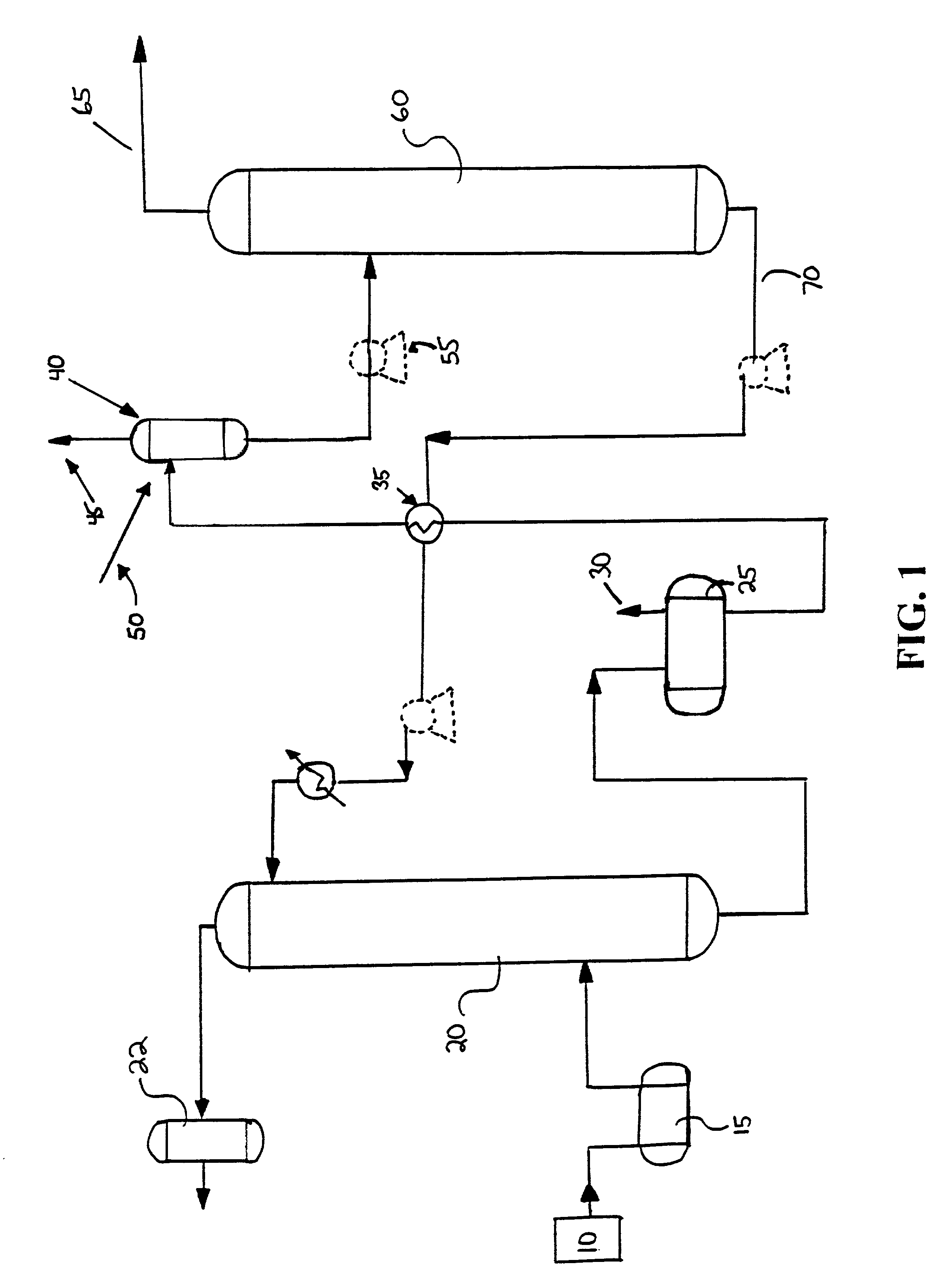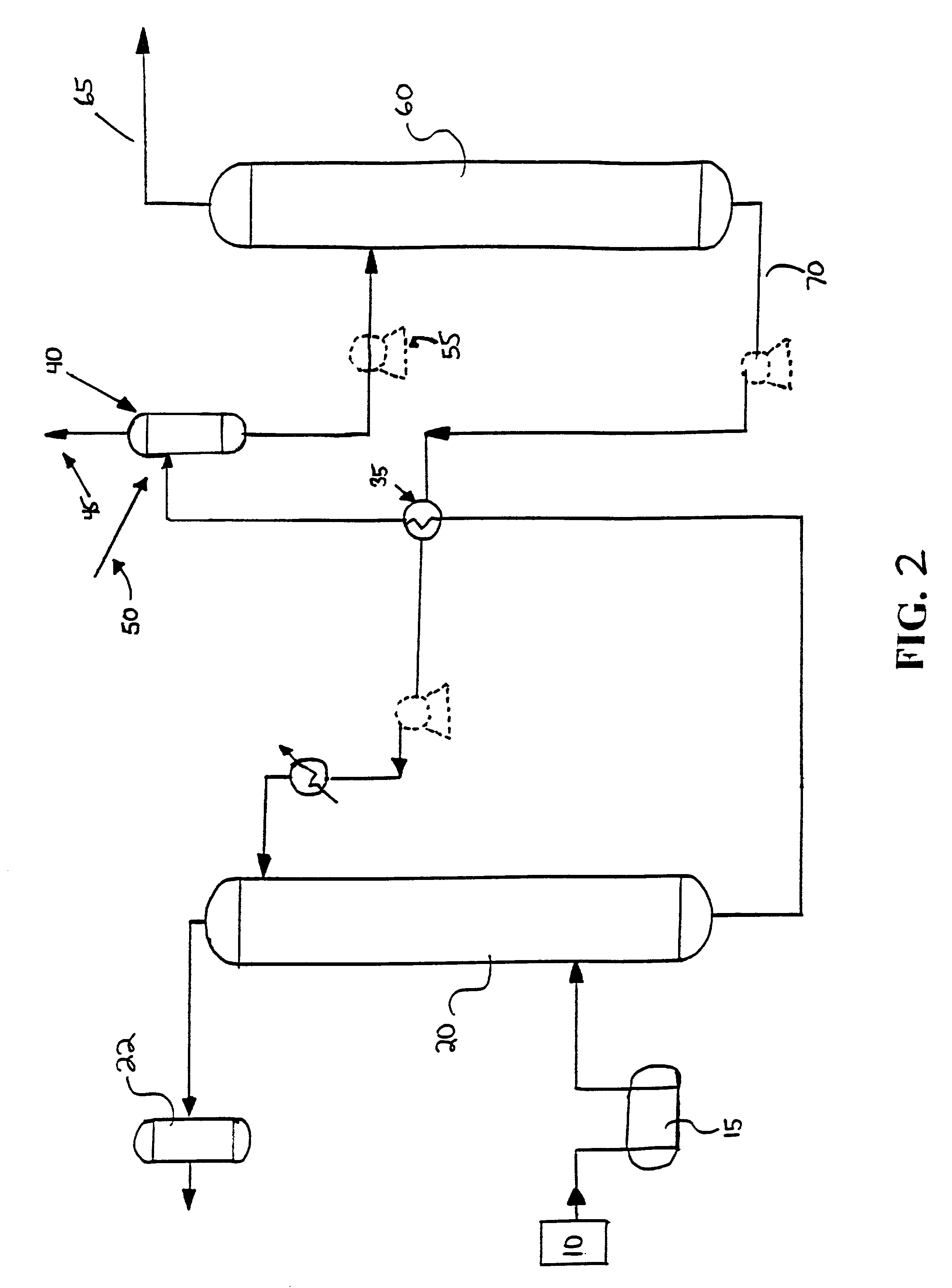Apparatus and method for exclusively removing VOC from regeneratable solvent in a gas sweetening system
a technology of regeneratable solvent and extractive apparatus, which is applied in the direction of combustible gas purification/modification, hydrogen sulfide, chemical/physical processes, etc., can solve the problems of limited amount of voc that can be liberated from the solvent, temperature and pressure, and gas stream is not sufficiently flammable to burn under its own combustibility,
- Summary
- Abstract
- Description
- Claims
- Application Information
AI Technical Summary
Benefits of technology
Problems solved by technology
Method used
Image
Examples
Embodiment Construction
[0031] As required, detailed embodiments of the present invention are disclosed herein; however, it is to be understood that the disclosed embodiments are merely exemplary of the invention that may be embodied in various and alternative forms. The figures are not necessarily to scale, some features may be exaggerated or minimized to show details of particular components. Therefore, specific structural and functional details disclosed herein are not to be interpreted as limiting, but merely as a basis for the claims and as a representative basis for teaching one skilled in the art to variously employ the present invention.
[0032] Referring to FIG. 1, a schematic of an exemplary system of the present invention and its method of operation is disclosed. The method and system are utilized to process acid gas (carbon dioxide and hydrogen sulfide) out of a source 10, typically produced gas, into sweet gas 22 for an end user. In a preferred embodiment, an absorbent fluid stream such as a reg...
PUM
| Property | Measurement | Unit |
|---|---|---|
| temperature | aaaaa | aaaaa |
| temperature | aaaaa | aaaaa |
| temperature | aaaaa | aaaaa |
Abstract
Description
Claims
Application Information
 Login to View More
Login to View More - R&D
- Intellectual Property
- Life Sciences
- Materials
- Tech Scout
- Unparalleled Data Quality
- Higher Quality Content
- 60% Fewer Hallucinations
Browse by: Latest US Patents, China's latest patents, Technical Efficacy Thesaurus, Application Domain, Technology Topic, Popular Technical Reports.
© 2025 PatSnap. All rights reserved.Legal|Privacy policy|Modern Slavery Act Transparency Statement|Sitemap|About US| Contact US: help@patsnap.com


